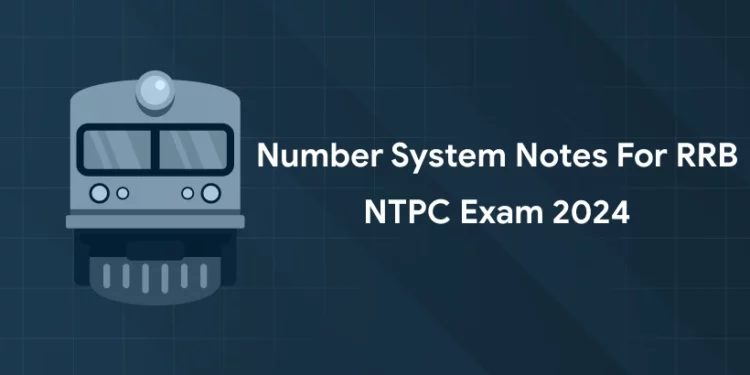Table of Contents
| RRB NTPC 2024- Exam Summary | |
| Name of the Organization | Railway Recruitment Board (RRB) |
| Job Role | Graduate Posts- Chief Commercial cum Ticket Supervisor, Station Master, Goods Train Manager, Junior Accountant Assistant cum Typist, Senior Clerk cum Typist Under Graduate Posts- Commercial cum Ticket Clerk, Accounts Clerk cum Typist, Junior Clerk Cum Typist, Trains Clerk |
| Advt. No. | RRB/ADI/Advt./CEN 05 & CEN 06/2024 |
| Job Location | Across India |
| Total Vacancy | Graduate Level- 8113 Undergraduate Level- 3445 |
| Mode of Application | Online |
| Apply Online Dates | Graduate- 14th September to 20th October 2024 Undergraduate- 21st September to 27th October 2024 |
| Qualification for RRB NTPC | 12th (+2 Stage) / Any Graduates |
| Age Limit | 18 to 33 Years / 18 to 36 Years |
| Selection for RRB NTPC | CBT-1, CBT-2, Skill Test, Document Verification, Medical Test |
| Official Website | http://www.rrbcdg.gov.in/ |
Prepare for RRB Exam with Expert Mentors! Get Free Demo Classes Here!
RRB NTPC CBT 1 Exam Pattern 2024
The following is a detailed overview of the RRB NTPC CBT -1 exams:| Sections | Maximum Marks |
| General Awareness | 40 |
| Mathematics | 30 |
| General Intelligence and Reasoning | 30 |
| Total | 100 |
| No of Questions – 100 | Time – 90 Minutes |
Prepare for RRB Exam with Expert Mentors! Get Free Demo Classes Here!
RRB NTPC CBT 2 Exam Pattern 2024
1: The electron was discovered by________.
| No. | Subject | Questions asked | Marks allotted |
| 1. | General Intelligence & Reasoning | 35 | 35 |
| 2. | Mathematics | 35 | 35 |
| 3. | General Awareness | 50 | 50 |
| Total | 150 | 150 | |
RRB NTPC Exam Syllabus 2024 for Mathematics
In this section, we will go through the RRB NTPC 2024 syllabus for mathematics.- Ratio and Proportions
- Trigonometry
- Mensuration
- LCM
- Elementary Algebra
- Fractions
- Geometry
- HCF
- Profit and Loss
- Time and Distance
- Time and Work
- Number system
- Simple and Compound Interest
- Elementary Statistics
- Decimals
Prepare for RRB Exam with Expert Mentors! Get Free Demo Classes Here!
Number System Notes for RRB NTPC Exam 2024
A number is a mathematical entity that is used to count, measure, and label. A number system, also known as a system of numeration, is a method of writing numbers or symbols consistently. In simplified terms, the number system is concerned with the writing of numbers. The number system may be categorised into the following types based on the numbers utilised in the system:- Binary Number System
- Octal Number System
- Decimal Number System
- Hexadecimal Number System
- Face Value: The face value of a digit in a number is its true value.
- Place Value: The value of a digit concerning its position in the number is referred to as its place value.
Types of Numbers
- These are numbers that are represented as the square root of a negative number. These numbers are often written as “ai,” where “a” is a number and ” i” is a symbol denoting the imaginary component, with the value of I equal to the root of -1. Imaginary numbers are often represented on a vertical number line plane. 2i and 7i are two examples.
- Real Numbers are numbers that can be expressed on a number line. To put it simply, any numbers other than imaginary numbers are real numbers.
- Irrational numbers are real numbers that cannot be represented because “p” or “q” are non-terminating terms. Numbers with a perfect square root are not irrational.
- Real numbers that can be represented as powers of p/q, where q is a non-zero number, are known as rational numbers. E.g. 1, -4, 2.3, etc.
- Integers are integers with a denominator of ‘1’, or numbers that are not in the form of a fraction or a decimal. Integers are further divided into the following categories: Positive Integers, Negative Integers and Zero.
- A fraction is a portion of a whole. Fractions are typically expressed as p/q, where ‘p’ is the numerator and ‘q’ is the denominator. Both “p” and “q” are non-zero terms in this case. Fraction is classified as a proper fraction, improper fraction and mixed fraction.
- A decimal is a fraction with a denominator that is a power of ten. 1.5, 2.75, and 3.873, for example.
- Natural numbers can be defined as the number we used to count or as a collection of all positive integers. For example: 1, 2, 3, …
- When zero is included in natural numbers, the set of numbers is referred to as whole numbers. this series is like 0, 1, 2, 3, 4…
- An even number is a set of natural numbers that are exactly divisible by two. 2, 4, 6, 8, etc.
- A set of natural numbers other than even numbers are referred to as odd numbers. 1, 3, 5, etc.
- Prime numbers are natural numbers that contain precisely two elements, which are ‘1’ and themselves. 2, 3, 5, 7, 11, etc.
- A composite number is a natural number that has more than two elements. 4,6,8,9,10,12…
- Because 1 has only one factor, it is neither prime nor composite and is thus categorised as a unit.
- Twin prime numbers are two prime numbers that vary by two. (3,5), (5,7), etc (11,13)
- Co-prime numbers are those numbers that have no common factor other than ‘1’. In other words, a set of numbers with H.C.F 1 is a set of co-prime numbers. As an example, (6,35), (12,25)
- The only even prime number is 2.
- There are 15 prime numbers ranging from 1 to 50, and their sum is 328.
- There are 25 prime numbers ranging from 1 to 100, and their sum is 1060.
- The only consecutive prime numbers are 2 and 3.
- The only triplet of twin prime numbers is 3, 5, and 7.
- A number is seen to be perfect if the total of its factors, except that number, equals that number. 6 and 28 as examples The factors of 6 are 1, 2, 3, and 6 and 1 + 2 + 3 = 6. The 28’s factors are 1, 2, 4, 7, 14, 28 and 1 + 2 + 4 + 7 + 14 = 28
- The sum of the reciprocals of a perfect number’s components is always 2.
- Factorial is a product of all natural numbers, starting with the first and ending with the number. In basic terms, the factorial of a number is the product of all natural numbers that are equal to or less than the number. N! = 1×2×3… (N – 1) × N.
Prepare for RRB Exam with Expert Mentors! Get Free Demo Classes Here!
Dividend, Divisor, Quotient, and Remainder Relationship
- Dividend = Divisor × Quotient + Remainder
- The value of the remainder is always positive.
Convert a Recurring Decimal Into a Fraction
When we convert a recurring decimal into a fraction, first look at how many digits are repeated. If 1 number is recurring then put the denominator as 10-1=9. If two numbers are recurring then put the denominator as 100-1=99. Then you can simplify the resulting fraction into their smallest forms. e.g. 0.7777…= 7/ (10-1) = 7/9 To put it simply, we put as many 9s in the denominator as digits are repeating. If the decimal includes a mixed recurring decimal, such as 0.5777…, then in the denominator, we use zero for non-repeating numbers and 9 for repeating numbers, and we subtract the non-repeating number from the full amount in the numerator. e.g. 0.577777…= (57-5)/ 90= 52/90Prepare for RRB Exam with Expert Mentors! Get Free Demo Classes Here!
Divisibility Test
The criteria for checking divisibility for each number are given in the table below| Number | Condition |
| 2 | If a number’s unit digit is even or the final digit is 0 |
| 3 | if the sum of a number’s digits is a multiple of three |
| 4 | When the final two digits of a number are divisible by four or when the last two digits are zero |
| 5 | If a number’s final digit is 5 or 0 |
| 6 | A number that passes both the 2 and 3 divisibility tests. |
| 8 | When the final three digits of a number are divisible by 8 or when the last three digits are 0 |
| 9 | If the sum of a number’s digits is a multiple of 9 |
| 10 | If a number’s final digit is 0 |
| 12 | A number that passes both the 3 and 4 divisibility tests |
- In the case of 7, let’s have a look at an example. Consider the number 3402
- In the case of 11, Let’s have a look at an example. For instance, 273691
- When a six-digit number is generated by repeating a digit (111111, 222222, 333333, etc), it is divisible by three, seven, eleven, thirteen, and thirty-seven.
- When a six-digit number is generated by repeating a two-digit number (272727, 353535, 565656), the result is divisible by three, seven, thirteen, and thirty-seven.
- When a six-digit number is generated by repeating a three-digit number (273273, 135135, 456456) then it is divisible by seven, eleven, and thirteen.
RRB NTPC Previous Question Papers 2024
Check below links provided in the article to get RRB NTPC Previous Question papers, available in both Hindi and English version. Download PDF with answers and practice to score high in upcoming RRB NTPC exams.RRB NTPC Previous Question Papers in English PDF
RRB NTPC Previous Question Papers in Hindi PDF
RRB NTPC Syllabus 2024 PDF
The post looked at how to effectively handle number system questions. Following the advice on this website, you may solve the number system questions for RRB NTPC Exam 2024. Constant practice will also help you enhance your speed. Download the Entri app to practise additional modal questions on the number system topic for the RRB NTPC Exam 2024. Detailed notes and explanations for above-mentioned theories are available in the Entri app. Entri wishes all the candidates the very best for the upcoming examination!| RRB NTPC Exam Information Links | |
| RRB NTPC Notification | RRB NTPC Mock Test |
| RRB NTPC Syllabus | RRB NTPC Video Course |
| RRB NTPC Exam Date | RRB NTPC Study Materials |
| RRB NTPC Application Form | RRB NTPC Interview Questions |
| RRB NTPC Vacancy | RRB NTPC Job Profile |
| RRB NTPC Admit Card | RRB NTPC Salary |
| RRB NTPC Study Plan | RRB NTPC Preparation Tips and Tricks |
| RRB NTPC Best Books | RRB NTPC Result |
| RRB NTPC Eligibility Criteria | RRB NTPC Cutoff |
| RRB NTPC Selection Process | RRB NTPC Exam Analysis |
| RRB NTPC Answer Key | |











